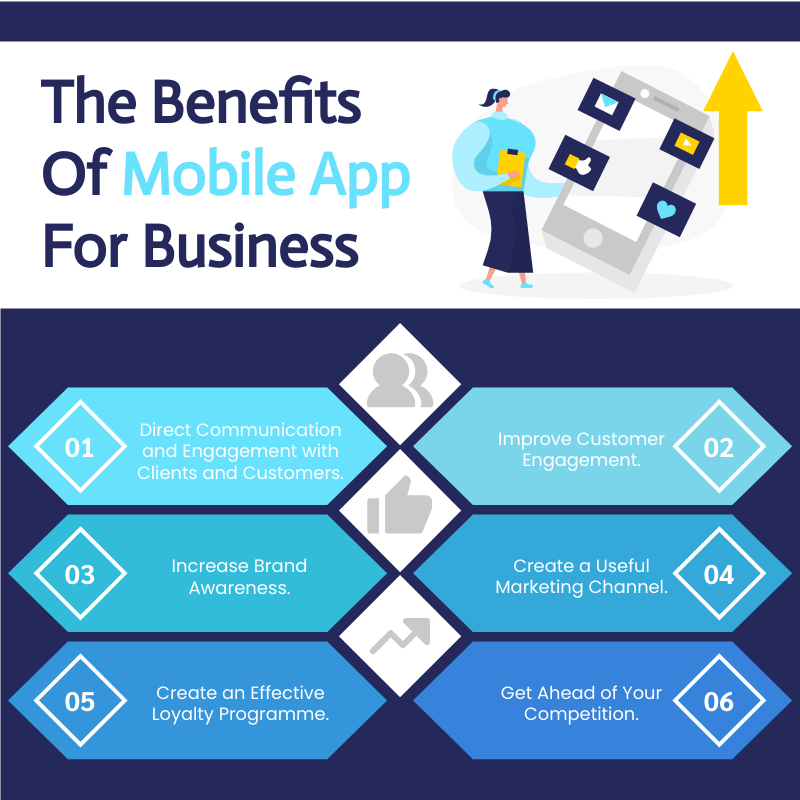Mobile apps have become an integral part of daily life, with users spending nearly 5 hours per day (or 4 trillion hours annually) on mobile app usage. In 2023 alone, the total number of installed apps reached a staggering 255 billion.
These statistics underscore the growing reliance on apps over brand websites in recent years.
To capitalize on this trend, businesses must prioritize best practices in app design, meticulously monitoring every design detail throughout the mobile application development process.
Designing a mobile app in 2024 demands a profound understanding of evolving trends, user expectations, and technological advancements in the mobile industry. With 52% of users unwilling to tolerate poor UX design, the importance of UI/UX design components cannot be overstated.
In a landscape where millions of apps vie for user attention, adopting best practices becomes paramount. This involves creating visually appealing interfaces while prioritizing usability, performance, and security.
Creating a mobile app entails a journey from conceptualization to development. Initially, you’ll identify user needs and define your target audience. Subsequently, you’ll conduct competitor research, brainstorm potential solutions, and prioritize the most crucial features.

Following that, you’ll delve into crafting the app’s design, encompassing layout and visual style to ensure a user-friendly experience. With the design finalized, you’ll proceed to select a development approach and begin building the app.
Subsequently, testing becomes pivotal, encompassing both product and user testing to evaluate the app’s functionality. Upon completion, you’ll launch the app and commence continuous improvement based on user feedback, ensuring its success in the ever-evolving mobile landscape.
Direct communication and engagement with clients and customers matter
Direct communication and engagement with clients and customers are paramount for any business. It fosters trust, builds relationships, and allows for a better understanding of their needs and concerns. By engaging directly, businesses can gather valuable feedback, address issues promptly, and tailor their products or services to meet customer demands effectively. Moreover, it provides an opportunity to convey important information, updates, and promotions directly to the target audience, enhancing customer satisfaction and loyalty. Overall, prioritizing direct communication and engagement is key to fostering long-term relationships and driving success in any business.
Improve Customer engagement matter:
Improving customer engagement is crucial for businesses looking to thrive in today’s competitive landscape. Here are some strategies to enhance customer engagement:
Personalization: Tailor your interactions and offerings to meet the specific needs and preferences of individual customers. Utilize data analytics to understand customer behaviors and preferences, allowing you to offer personalized recommendations, promotions, and experiences.
Multi-channel communication: Engage with customers across various channels such as social media, email, live chat, and phone. Be where your customers are and provide consistent messaging and support across all channels.
Active listening: Actively listen to customer feedback and incorporate it into your products, services, and processes. Make customers feel heard and valued by responding promptly to inquiries, concerns, and suggestions.
Interactive content: Create engaging content such as quizzes, polls, surveys, and contests to encourage interaction and participation from your audience. Interactive content not only captures attention but also provides valuable insights into customer preferences and interests.
Community building: Foster a sense of community among your customers by creating forums, online groups, or social media communities where they can connect, share experiences, and provide support to one another. Encourage user-generated content and facilitate discussions around your brand.
Reward programs: Implement loyalty programs or reward schemes to incentivize repeat purchases and engagement. Offer discounts, exclusive offers, or rewards points for various actions such as making purchases, referring friends, or engaging with your brand on social media.
Continuous improvement: Regularly assess and refine your customer engagement strategies based on feedback, metrics, and industry best practices. Stay agile and adaptable to evolving customer preferences and market trends.
Employee empowerment: Empower your frontline employees with the authority, resources, and training to provide exceptional customer service. Encourage them to proactively engage with customers, resolve issues efficiently, and exceed expectations.
By prioritizing customer engagement and implementing these strategies, businesses can cultivate stronger relationships, enhance brand loyalty, and drive long-term success.
Increase band awareness matter
Consistent Branding: Ensure consistency in your brand’s visual elements, messaging, and tone across all channels, including your website, social media profiles, advertisements, and packaging. Consistency helps in building a strong and recognizable brand identity.
Content Marketing: Create valuable and relevant content that resonates with your target audience. This could include blog posts, articles, videos, infographics, or podcasts. Share this content across various platforms to increase your brand’s visibility and establish thought leadership in your industry.
Social Media Engagement: Utilize social media platforms to connect with your audience, share updates about your brand, and engage in conversations. Encourage user-generated content, respond to comments and messages promptly, and participate in relevant hashtags and discussions to increase visibility and reach.
Influencer Partnerships: Collaborate with influencers or industry experts who have a significant following and credibility among your target audience. Partnering with influencers can help expose your brand to a wider audience and build trust through authentic recommendations.
Search Engine Optimization (SEO): Optimize your website and content for search engines to improve your visibility in search results. Conduct keyword research, optimize meta tags, create high-quality content, and build backlinks from reputable websites to increase your organic traffic and brand exposure.
Email Marketing: Build an email list of subscribers who are interested in your brand or products. Send regular newsletters, promotional offers, and updates to keep your audience engaged and informed about your brand.
Partnerships and Collaborations: Forge partnerships with complementary brands or organizations to expand your reach and tap into new audiences. Collaborate on joint marketing campaigns, events, or product launches to leverage each other’s networks and increase brand awareness.
Community Engagement: Participate in local events, sponsorships, or charitable activities to show your brand’s commitment to the community. Engage with local influencers, businesses, and organizations to build relationships and increase brand visibility within your target market.
Referral Programs: Encourage your existing customers to refer their friends and family to your brand by offering incentives or rewards for successful referrals. Word-of-mouth recommendations are powerful in building trust and increasing brand awareness.
Measure and Analyze: Track key metrics such as website traffic, social media engagement, brand mentions, and customer feedback to evaluate the effectiveness of your brand awareness efforts. Use this data to refine your strategies and focus on tactics that yield the best results.
Create a useful marketing channel
Builds Trust and Authority: By providing valuable and informative content, you can establish your brand as a trusted authority in your industry. This helps to build credibility and trust with your audience.
Increases Brand Awareness: Content marketing allows you to reach a wider audience by creating content that resonates with your target market. Through sharing and engagement, your brand can gain visibility and attract new customers.
Drives Traffic to Your Website: High-quality content that is optimized for search engines can help drive organic traffic to your website. This increases your chances of converting visitors into leads or customers.
Nurtures Leads: Content can be used throughout the customer journey to educate, inform, and guide leads towards making a purchase decision. By providing valuable content at each stage, you can nurture leads and move them through the sales funnel.
Encourages Engagement and Interaction: Content marketing encourages interaction and engagement with your audience. Whether it’s through blog comments, social media shares, or email responses, content can spark conversations and build relationships with your audience.
How to Make the Most of Content Marketing:
Know Your Audience: Understand your target audience’s needs, interests, and pain points. Tailor your content to address their specific challenges and provide solutions that resonate with them.
Create High-Quality Content: Invest in creating content that is well-researched, informative, and valuable to your audience. This could include blog posts, videos, infographics, podcasts, ebooks, or webinars.
Optimize for SEO: Ensure your content is optimized for search engines by incorporating relevant keywords, meta tags, and internal links. This will help improve your visibility in search engine results and attract organic traffic to your website.
Promote Across Channels: Promote your content across various channels, including your website, social media platforms, email newsletters, and industry forums. Utilize paid advertising, influencer partnerships, and content syndication to extend your reach.
Track and Measure Results: Use analytics tools to track the performance of your content marketing efforts. Monitor key metrics such as website traffic, engagement, conversions, and ROI to assess the effectiveness of your strategies and make data-driven decisions.
Design Customization: Tailoring Your Website’s Appearance and Functionality
Design customization involves adapting the appearance and layout of your website to reflect your brand identity, user experience objectives, and visual preferences. This process encompasses UI/UX design, which focuses on creating an intuitive, engaging, and cohesive browsing experience for visitors.
Indeed, while WordPress itself is free, building a WordPress website entails various costs including domain, hosting, themes, plugins, customizations, content, SEO, testing, marketing, and maintenance.
By meticulously planning and budgeting for these elements, you can enlist the expertise of a seasoned WordPress development company to craft a captivating website that aligns with your objectives and facilitates your online endeavors effectively.
